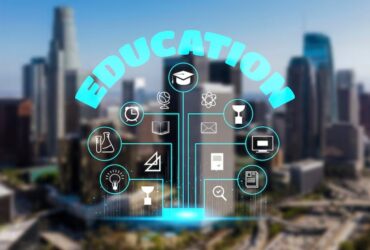The evolution of educational technology has revolutionized the way knowledge is imparted in classrooms today. From chalkboards to digital tablets, the shift has been monumental, influencing not just the tools used but also pedagogical strategies. Modern education heavily relies on EdTech to facilitate a more interactive and personalized learning experience for students worldwide. These innovations are crucial in bridging gaps in traditional education systems by providing flexible and accessible learning solutions.
Case Study: Adaptive Learning Technologies
EdTech innovations encompass a wide range of technologies that are reshaping education, making it more engaging and efficient. These include online platforms, interactive software and advanced tools like virtual reality that create immersive learning experiences. Technologies such as artificial intelligence (AI) have significantly altered how educational content is delivered and absorbed, allowing for customization based on individual learning paces and styles.
One cannot overlook the importance of market gap analysis services in identifying areas where EdTech can make the most impact. This process helps highlight opportunities for innovation, guiding companies to develop solutions that cater to unmet needs within the educational sector. For instance, adaptive learning technologies that tailor educational content to suit each student’s needs have emerged from recognizing these market gaps.
As these technologies continue to evolve, they are expected to address various challenges within the educational system by fostering an environment that encourages critical thinking and problem-solving skills. By understanding these innovations, educators can better adapt their teaching methods to prepare students for the demands of the modern world.
Research has shown that implementing adaptive learning technologies can lead to significant improvements in student performance metrics. Studies indicate that students using these platforms typically show a 20-30% increase in information retention compared to traditional learning methods. These systems utilize sophisticated algorithms to track student progress, identify knowledge gaps and automatically adjust difficulty levels to maintain an optimal learning challenge. This personalized approach ensures that advanced students remain engaged while struggling learners receive the additional support they need to succeed.
The Role of AI in Education
Artificial intelligence plays a pivotal role in transforming educational tools, making them smarter and more efficient. In classrooms, AI applications can automate administrative tasks, freeing up valuable time for teachers to focus on personalized instruction. For students, AI offers tailored learning experiences through intelligent tutoring systems that adapt content based on their performance and progress.
The practical applications of AI extend beyond just personalized learning; they also include predictive analytics that help identify students at risk of falling behind. This proactive approach enables educators to intervene early, providing necessary support to improve student outcomes. Additionally, AI-driven data analysis offers insights into teaching effectiveness, allowing for continuous improvement in instructional strategies.
The benefits of AI in education are manifold, from enhancing teacher productivity to improving student engagement through interactive and adaptive content delivery. As AI technology advances, its integration into educational settings will likely become more seamless, further enriching the learning experience for all stakeholders involved.
Machine learning algorithms are now being deployed to analyse vast amounts of educational data, creating detailed learning profiles for each student. These profiles enable AI systems to predict learning trajectories and recommend specific interventions before academic challenges become serious issues. Furthermore, natural language processing capabilities allow AI-powered educational tools to provide instant feedback on writing assignments, helping students improve their communication skills through real-time suggestions and corrections. This level of automated support was unimaginable just a decade ago but is now becoming increasingly common in educational institutions worldwide.
Digital Classrooms and E-Learning Platforms
Digital classrooms have redefined traditional teaching methods by integrating technology into everyday learning environments. These setups often include interactive whiteboards, cloud-based resources and devices that facilitate real-time collaboration among students. The shift towards digital classrooms has been accelerated by e-learning platforms that offer flexible access to educational content anytime and anywhere.
E-learning platforms have revolutionized education by providing courses that can be accessed remotely, breaking down geographical barriers to learning. They offer a plethora of resources ranging from video lectures to interactive quizzes that cater to diverse learning preferences. Successful case studies of e-learning implementations highlight improved student performance and engagement when compared to conventional classroom settings.
This digital shift not only supports personalized learning but also equips students with essential digital literacy skills necessary for future careers. Educators must embrace these changes by integrating digital tools into their curriculums thoughtfully to maximize their potential benefits while addressing any technological challenges that may arise.
Writing and Market Gap Analysis
Effective communication and writing are essential skills in the edtech industry, where conveying complex ideas in an understandable manner is crucial. This is where expert writing and professional communication services come into play, helping bridge the gap between technology and its users. Additionally, market gap analysis services are vital for identifying unmet needs and opportunities within the edtech sector. By understanding these gaps, companies can tailor their solutions to better serve educators and learners. Real-life examples include platforms that offer targeted content for specific educational niches or tools designed to address common pain points faced by educators. As the edtech landscape continues to evolve, effective communication and thorough market analysis will play a critical role in its success.
Challenges and Considerations in EdTech Integration
The integration of EdTech into existing curriculums presents several challenges that educators must navigate carefully. One common hurdle is resistance to change due to unfamiliarity with new technologies or skepticism about their efficacy in improving educational outcomes. Additionally, there are concerns regarding data privacy and security as digital tools collect vast amounts of personal information from users.
To overcome these challenges, it is crucial for schools to provide adequate training and support for teachers transitioning to tech-enhanced teaching methods. This includes offering professional development opportunities focused on effectively utilizing EdTech tools in classroom settings. Furthermore, careful consideration must be given to selecting technology solutions that align with curriculum goals while ensuring compliance with privacy regulations.
While these challenges may seem daunting initially, addressing them proactively can lead to the successful integration of EdTech innovations within educational institutions. By prioritizing teacher preparedness and safeguarding student data privacy rights throughout this process will pave the way towards creating enriched learning experiences tailored specifically towards meeting individual learner needs.
The Impact of EdTech on Education
The transformative impact of EdTech on education cannot be overstated as it continues reshaping how knowledge is imparted across various levels globally today. With advancements such as artificial intelligence-powered tutoring systems offering personalized instruction alongside interactive digital classrooms fostering collaboration amongst peers remotely, the possibilities are truly endless when harnessing the power behind innovative technologies available now more than ever before.
The journey towards embracing technological advancements might seem daunting initially but ultimately rewarding given the potential benefits offered through increased accessibility and flexibility provided via e-learning platforms combined with improved efficiency and productivity gained by adopting automation processes. This allows educators to focus solely on delivering impactful lessons tailored to meet diverse learner needs effectively and efficiently.












































Leave a Reply